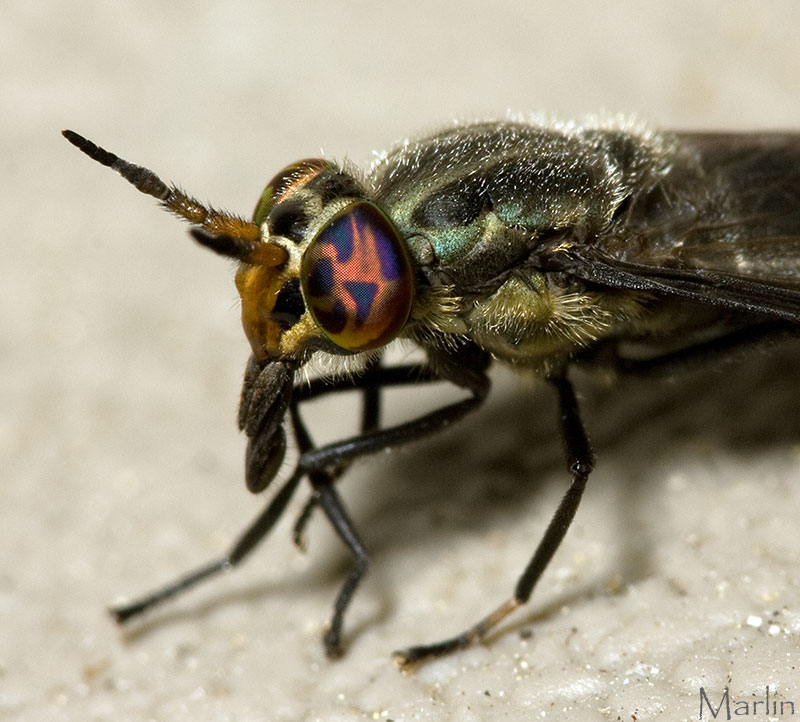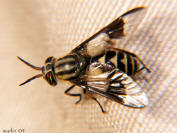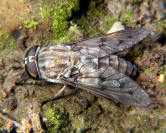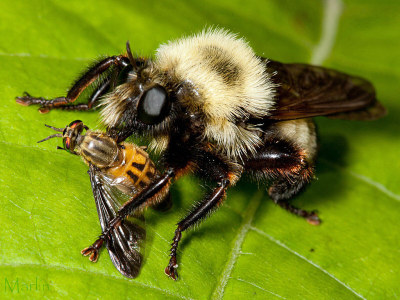| Family Tabanidae – Horse and Deer Flies Order Diptera Live adult horse and deer flies photographed in the wild at North American locations as noted. |
|
|
Adult horse and deer flies are active primarily during warm weather in spring and summer in the north, year-round in Florida and other southern environs. Most species prefer open, grassy habitats near fresh water, where their eggs are deposited on vegetation and the larvae either drop into the water or burrow into mud along the banks [1].
Both male and female adult tabanids feed on flower nectar. As with most insects requiring a blood meal for reproduction, females are the ones responsible for provisioning; they do so by biting mammals, some large, including humans, cattle, deer – and of course, horses. Some species prey on birds, reptiles, or amphibians [2]. Male tabanids are rarely seen and do not bite. Larvae eat plant material, or are predacious on small invertebrates. Some species spend several years in the larval state. It has been suggested larvae of Tabanidae species deposited in water may be an early indicator of water quality, as are the nymphs of dragonflies and damselfies (odonata), and other sensitive organisms that depend on contaminant free, oxygenated water for their development. Lots of horse flies is good news for our watershed! |
 Deer Fly Chrysops calvus |
 Deer Fly Chrysops callidus |
 Horse Fly Tabanus sulcifrons |
Horse Fly Hybomitra sp. |
Characteristics of Tabanidae:
|
|
Horse and deer flies are prey for other flies. Asilids comprise over 7,000 species world- wide; nearly 1,000 in North America. All robber flies have stout, spiny legs, a dense moustache of bristles on the face (mystax), and 3 simple eyes (ocelli) in a characteristic depression between their two large compound eyes. The mystax helps protect the head and face when the fly encounters struggling prey. |
 Laphria thoracicaaa with deer fly prey |
References
|
|
Flies of North America – Order Diptera. Flies are prevalent in virtually all habitats, with over 16,000 species in North America. Flies can be distinguished from all other insects in that they only have one pair of normal wings. Most flies have compound eyes and mouthparts adapted for piercing, lapping or sucking fluids.
Syrphidae | Flies Index | Tachinidae | Bee Flies | Robber Flies |

